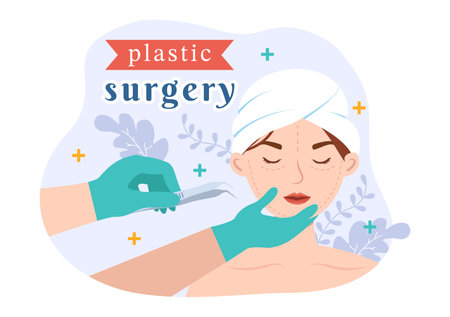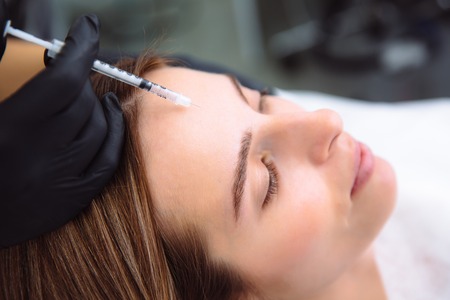Introduction to Laser and Light Therapies for Acne Scarring
As someone who has weathered the storm of acne and its lingering scars, I know first-hand how deeply they can affect self-confidence. For years, covering up with makeup or shying away from bright lights became second nature. But recently, a quiet revolution has swept through UK skin clinics: laser and light therapies for acne scarring. These innovative treatments are no longer reserved for celebrities or city dwellers—they’re increasingly accessible from Glasgow to Brighton, promising real results where creams and serums have fallen short. What’s behind this growing popularity? From my experience and countless chats in waiting rooms, it’s a combination of visible improvement, shorter recovery times, and a shift in cultural attitudes towards investing in one’s skin health. There’s a sense of empowerment in choosing a science-backed solution rather than simply “putting up with it.” In the UK, where understated confidence is prized, these therapies are helping people reclaim their complexions—and their sense of self—with subtlety and sophistication.
2. Types of Laser and Light Treatments Available in the UK
When it comes to addressing acne scarring, the UK offers a spectrum of laser and light-based therapies, each with its own distinct approach and benefits. From my experience exploring British clinics—where attention to detail and patient comfort is paramount—Ive noticed not only the variety of technologies but also the subtle touches that make the process uniquely British. Below is an overview of the most commonly available treatments, alongside some of the emerging options you might encounter.
Fractional CO2 Lasers
Fractional CO2 lasers are widely regarded as the gold standard for moderate to severe acne scars. By creating microscopic columns in the skin, they stimulate collagen production and promote smoother texture over time. Many clinics in London, Manchester, and Edinburgh now use advanced machines designed to minimise downtime—something busy Britons especially appreciate.
Intense Pulsed Light (IPL)
IPL is popular for those with post-acne redness or pigmentation rather than deep textural scars. While technically not a laser, IPL uses broad-spectrum light to target discolouration and even out skin tone. This treatment is gentle enough for regular use, and many British practitioners combine it with other therapies for a tailored approach.
Emerging Technologies
The UK aesthetics scene is quick to embrace innovation. Treatments like picosecond lasers (for more precise scar targeting) and radiofrequency microneedling devices are increasingly available in major cities. Some clinics even offer hybrid therapies—blending laser energy with other modalities for enhanced results.
Comparison of Common Laser and Light Therapies in the UK
| Treatment Type | Main Target | Downtime | Typical Course | Unique British Touches |
|---|---|---|---|---|
| Fractional CO2 Laser | Deep acne scars, texture | 5-7 days | 1-3 sessions | Bespoke aftercare kits; calming herbal teas post-treatment |
| IPL (Intense Pulsed Light) | Pigmentation, redness | Minimal (24 hours) | 3-6 sessions | Sensitive-skin formulas; follow-up calls from clinicians |
| Pico Lasers / Emerging Tech | Stubborn marks, fine scars | 2-3 days | 1-4 sessions | Dermatologist-led consultations; discreet city-centre locations |
A Note on Clinic Experience in the UK
I’ve found that many British clinics pride themselves on creating a calm, almost spa-like atmosphere—think soothing playlists, classic decor, and an emphasis on privacy. It’s not unusual to be offered a cup of Yorkshire tea while discussing your treatment plan! These local nuances add a touch of reassurance to what can otherwise feel like a daunting journey.

Effectiveness and Results: What to Realistically Expect
When considering laser and light therapies for acne scarring in the UK, it’s only natural to want honest answers about what these treatments can actually achieve. Through my own journey and conversations with fellow patients from London to Manchester, the consensus is clear: while results can be transformative, they are rarely “miraculous” overnight fixes. Most UK clinics recommend a tailored approach, often involving a series of sessions spaced weeks apart, rather than a one-off solution.
The Reality Behind Before-and-After Photos
We’ve all seen those dramatic before-and-after images online, but it’s important to remember that lighting, angles, and even makeup can influence perceived outcomes. In my experience, reputable clinics in the UK are transparent about this, often sharing unfiltered photos and even inviting clients to meet former patients. For many, improvements become most noticeable after several months as the skin continues to heal and regenerate beneath the surface.
Authentic Testimonials from UK Patients
Emma from Bristol shared with me, “After three sessions of fractional laser, my deep ice-pick scars softened but didn’t disappear completely. I feel more confident wearing less makeup.” James in Edinburgh echoed similar sentiments: “The redness faded after LED therapy, and my skin texture is smoother. It’s not perfect, but the difference is enough for me.” These stories underline an important point: realistic expectations are key.
Nuanced Outcomes Based on Scar Type and Skin Tone
It’s worth noting that results vary depending on scar depth, skin tone, and individual healing responses. UK practitioners often conduct thorough assessments to recommend the best modality—be it ablative lasers for deeper scars or gentler IPL treatments for post-inflammatory redness. Darker skin types may require specific settings to avoid pigmentation issues; British dermatologists are well-versed in customising protocols accordingly.
Ultimately, the general mood among UK patients is one of cautious optimism. Most see visible improvements—smoother texture, reduced redness, and softer scars—but few experience total erasure of old marks. If you’re considering these therapies, prepare for subtle refinement rather than absolute perfection; embrace your evolving reflection with patience and self-compassion.
4. Treatment Process and Recovery: The British Experience
If you’re considering laser or light therapies for acne scarring in the UK, it’s worth understanding the entire journey—from that first GP appointment to walking out of the clinic after your last session. I’ll walk you through what to expect, weaving in some uniquely British aspects and practical advice drawn from real experience.
The Typical UK Treatment Journey
| Step | What to Expect | British Touch |
|---|---|---|
| 1. GP Referral | You’ll usually start by booking an appointment with your NHS GP, who assesses whether specialist referral is needed. For most cosmetic treatments, you’ll be guided towards private clinics. | Expect polite conversation, a cup of tea in the waiting room (if you’re lucky), and plenty of paperwork. Privacy is paramount—your concerns will be handled discreetly. |
| 2. Consultation at Clinic | A thorough skin assessment by a qualified practitioner. They’ll explain options, expected results, risks, and costs upfront. | Practitioners are friendly but professional; small talk is common but always respectful of boundaries. |
| 3. Patch Test & Planning | A patch test ensures you don’t react badly to the treatment. You’ll discuss downtime and aftercare so you can plan around work or social commitments. | Scheduling often takes into account school holidays or ‘bank holiday’ weekends for minimal disruption—a classic British practicality! |
| 4. Treatment Sessions | Treatments may span several sessions (often 3-6). Each session lasts 30-60 minutes, with mild discomfort likened to “an elastic band snap.” | You might chat about the weather or local football while waiting—the sort of small comforts that make things less clinical. |
| 5. Aftercare & Recovery | You’ll receive detailed instructions on gentle cleansing, avoiding sun exposure (a challenge even in Britain!), and managing redness or swelling. | Many Brits take a ‘duvet day’ post-treatment—embracing downtime with a good book or favourite telly show. |
Cultural Quirks & Privacy Concerns
Bespoke privacy is highly valued in the UK. Clinics often offer private waiting areas and flexible scheduling to avoid bumping into acquaintances. The British sense of reserve means conversations about skin issues are handled tactfully—no over-sharing, just honest support when you need it.
Downtime: What’s Realistic?
Depending on the laser intensity, you may experience visible redness or peeling for up to a week. Most people schedule treatments for Fridays, making use of weekends (and sometimes a cheeky sick day) for recovery without drawing attention at work or school. Employers are generally understanding if you need time off—especially if you mention “minor medical procedures” rather than specifics.
Summary Table: Key Points of the British Acne Scar Laser Journey
| Aspect | British Reality |
|---|---|
| Pace of Process | Measured and methodical; patience required from start to finish. |
| Privacy Focus | Discretion at every stage; personal details kept confidential. |
| Cultural Attitude | Straightforward yet reserved discussions; no-nonsense reassurance. |
This step-by-step approach ensures that, even with nerves or uncertainty, you’re supported throughout your treatment journey in true British fashion—calmly, privately, and with just enough tea and humour to get you through.
5. Cost Considerations and NHS Availability
If you’re thinking about taking the plunge with laser or light therapies for acne scarring, it’s only natural to want a clear sense of the financial investment involved – and whether you can count on any support from the NHS. Having explored these treatments myself and chatted with fellow Brits navigating similar choices, here’s my honest, experience-led breakdown.
Private Clinic Fees: What You’ll Pay in the UK
Most reputable private clinics in London, Manchester, Edinburgh and beyond offer a range of laser and light-based treatments. The cost is usually calculated per session, reflecting both the type of technology used and the expertise of the practitioner. Expect to pay:
- IPL (Intense Pulsed Light): £150–£300 per session
- Fractional Laser (e.g., Fraxel): £350–£800 per session
- PicoSure or CO2 Laser: £500–£1,000 per session
Treatments often require 3–6 sessions for best results. Some clinics offer packages or seasonal deals, but even so, budgeting realistically is essential.
NHS Availability: Is It an Option?
Here’s the candid truth: laser and light therapies for purely cosmetic acne scarring are almost never funded by the NHS. There may be rare exceptions if severe psychological distress is documented and all other avenues have been exhausted, but for most of us, these treatments remain firmly in the realm of private healthcare.
Is It Worth Budgeting For?
This is where personal experience comes into play. If your scars are a source of daily self-consciousness – something I know all too well – investing in professional treatment can feel like an act of self-care rather than vanity. Still, value for money matters: not all clinics are created equal, so prioritise those with robust before-and-after galleries, glowing patient reviews, and practitioners registered with reputable bodies like the British Association of Dermatologists.
Ultimately, if you’re going to budget for one thing, let it be an initial consultation with a qualified dermatologist or aesthetic doctor. They’ll give you realistic expectations about what each treatment can achieve for your unique skin type and scarring pattern – saving you from costly disappointment down the line.
In summary: while NHS funding is unlikely for most cases, private laser and light therapies can be worth every penny if chosen wisely and approached with open eyes. There’s no price tag on confidence gained from feeling comfortable in your own skin.
6. Risks, Side Effects, and How to Choose a Qualified Practitioner
While laser and light therapies for acne scarring can be transformative, it’s only fair to discuss the possible risks and side effects. Treatments such as fractional lasers, IPL (Intense Pulsed Light), or LED phototherapy are generally well-tolerated when performed by skilled hands. However, my personal journey—and those of many I’ve spoken with—reminds me that no procedure is entirely risk-free.
Potential Risks and Side Effects
The most common side effects in the UK include temporary redness, swelling, and mild discomfort, which typically subside within days. Some people may notice slight bruising or changes in skin pigmentation, especially if they have darker skin tones. On rare occasions, improper treatment can lead to burns, blistering, or even scarring—ironically the very thing we’re trying to treat. It’s these honest accounts that remind us never to take shortcuts with our skin.
UK Regulations: A Safety Net for Consumers
The UK’s regulatory landscape offers reassuring protection for anyone considering aesthetic treatments. Clinics must adhere to stringent Care Quality Commission (CQC) standards if medical procedures are involved. Practitioners offering laser or intense pulsed light treatments must also comply with local authority regulations and health & safety protocols. Always check whether your chosen clinic is registered with reputable bodies such as the British Association of Dermatologists (BAD) or the Joint Council for Cosmetic Practitioners (JCCP).
Aesthetic Insights: Choosing Wisely
From my own experience, choosing a practitioner isn’t just about impressive credentials on a website; it’s about trust and comfort during your consultation. Ask to see before-and-after photos from real clients (not just stock images), read authentic reviews, and don’t hesitate to ask about their training and years of experience specifically with acne scar treatments. An ethical specialist will always discuss realistic expectations, potential side effects, aftercare, and costs transparently.
Final Thoughts
Investing in laser or light therapy is as much about finding the right expert as it is about finding the right technology. By prioritising clinics with solid reputations—often found in London, Manchester, Edinburgh, and other major UK cities—you’re far more likely to enjoy not just visible results but also peace of mind throughout your healing process.
7. Final Thoughts: Weighing the Pros and Cons in Everyday British Life
Reflecting on my own journey with laser and light therapies for acne scarring, I’ve come to appreciate how these treatments slot into the fabric of British daily life. In a country where we often pride ourselves on a stiff upper lip and a sense of quiet resilience, visible scarring can sometimes feel like a personal hurdle—an intimate reminder that’s hard to ignore, especially in close-knit communities or social gatherings where first impressions still carry weight.
Having tried both fractional laser and intense pulsed light, I noticed not only a transformation in my skin but also an almost imperceptible shift in my self-assurance. There’s something uniquely liberating about walking through a drizzly London morning or popping down to the local café in Manchester with the knowledge that your complexion looks clearer. It’s subtle, not showy—a very British sort of confidence boost.
Of course, embracing these treatments comes with its own set of pros and cons. The availability across the UK is generally good, especially in larger cities where reputable clinics are easy to find, but cost remains a barrier for many. While some might weigh up an investment in their skin against other expenses—perhaps considering whether it’s worth swapping that annual holiday abroad for a course of treatments—others may hesitate, mindful of downtime or the unpredictability of results.
Attitudes towards visible scarring are gently shifting here; there’s growing acceptance and celebration of natural beauty. Yet, for those who wish to smooth out old reminders and reclaim a bit more comfort in their skin, laser and light therapies can be truly empowering. They don’t promise perfection (and perhaps that’s just as well), but they do offer tangible improvements that fit into busy routines—whether you’re rushing between meetings or enjoying a lazy Sunday roast with family.
Ultimately, deciding to invest in these treatments is a personal choice, shaped by individual priorities and cultural attitudes. For me—and I suspect for many others—it’s less about chasing flawlessness and more about finding that quiet confidence which lets you enjoy all the little moments that make up British life, from sharing pints at the pub to smiling back at your own reflection on a rainy day.


